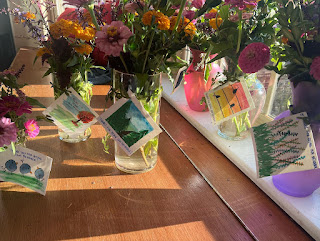Acts of Generosity are Contagious
Seeing someone do something good for someone else motivates people to perform their own helpful acts, researchers report. This finding could help drive cooperative behavior in communities.
In their study, researchers confirmed that people could be heavily influenced by others, especially when taking on prosocial behavioral actions designed to benefit society.
This study was completed in 2000 and included examples related to pandemic-related issues. One researcher wrote, “understanding this is important now, when large-scale cooperation and adoption of protective behaviors … have important implications for the well-being of entire communities,” said Haesung (Annie) Jung, who led the study while earning a PhD at the University of Texas at Austin.
The study shows cooperative behavior can be “caught” from observation or exposure.
These findings remind the public that their behavior can impact what others around them do, especially with acts of kindness, and it demonstrates why I have been such a proponent of sharing stories of good neighbors.
During Missouri Good Neighbor Week, we recognized top acts of neighboring and some people criticized this as bribery. However, we had a goal to spread the word about the kind neighbor actions taken to encourage others to do the same.
And now this research shows we were right to do so.
For this research effort, Jung reviewed the evidence from decades of studies. She and other researchers found that exposing people to “prosocial models”—watching someone perform an act of kindness—elicited some subsequent helpful acts. This response was partly driven by “goal contagion.”
The researchers say, witnessing prosocial actions lead people to adopt the underlying goal associated with the observed behavior, such as caring for others’ well-being.
“We found that people can readily improvise new forms of prosocial actions. They engaged in behaviors different from what they witnessed and extended help to targets in need than those helped by the prosocial model,” says Jung.
Researchers found that people were more motivated to help after witnessing others benefit from the prosocial model than when they benefitted from the prosocial act. This shows that the effect triggered by adopting others’ prosocial goals outweighed other potential motives triggered by self-benefit, such as doing it because they felt grateful.
The researchers suggest that adopting this framework could go a long way in influencing new prosocial behaviors.
“One of the best things we can do is frame recommended practices as prosocial actions,” said Marlone Henderson, associate professor of psychology. “By thinking of recommended practices as prosocial behavior, modeling becomes a powerful tool for encouraging others to engage in such practices.”
The only question that remains is whether you will be the neighbor setting the example, or the neighbor following the kindness examples of others.
###





Comments
Post a Comment